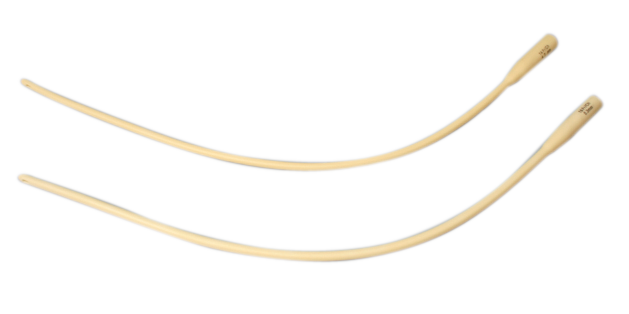
A urethral catheter (natural color latex) is a thin, flexible tube inserted into the male urethra to allow a patient to urinate without having to lift his penis. It's often used in cases of urinary tract infection (UTI), when traditional antibiotics haven't worked, or when an individual can't tolerate traditional antibiotics. The catheter is left in place for as long as necessary, and patients typically feel little discomfort from it.
| Ref. No.: | Size: | Length: | Qty.Cs: |
|---|---|---|---|
| NMU200606 | 6 Fr/ Ch | 270MM | 400 |
| NMU200608 | 8 Fr/ Ch | 270MM | 400 |
| NMU200610 | 10 Fr/ Ch | 270MM | 400 |
| NMU200612 | 12 Fr/ Ch | 400MM | 400 |
| NMU200614 | 14 Fr/ch | 400MM | 400 |
| NMU200616 | 16 Fr/ch | 400MM | 400 |
| NMU200618 | 18 Fr/ch | 400MM | 400 |
| NMU200620 | 20 Fr/ch | 400MM | 400 |
| NMU200622 | 22 Fr/ch | 400MM | 400 |
| NMU200624 | 24 Fr/ch | 400MM | 400 |
Looking for a natural and comfortable way to stay clean during your surgeries? Look no further than urethral catheters! These devices allow you to urinate without having to go through the hassle of using a traditional toilet. Plus, they come in a variety of colors that let you customize your experience.
A urethral catheter (natural color latex) is a thin, flexible tube inserted into the male urethra to allow a patient to urinate without having to lift his penis. It's often used in cases of urinary tract infection (UTI), when traditional antibiotics haven't worked, or when an individual can't tolerate traditional antibiotics. The catheter is left in place for as long as necessary, and patients typically feel little discomfort from it.
There are three types of urethral catheters: synthetic, male, and female. Synthetic catheters are the most common because they are easier to use and maintain. Male catheters are used by men when they need to urinate outside of the body. Female catheters are used by women when they need to urinate during childbirth or while they are pregnant.
A urethral catheter is a tube that is inserted through the penis to the bladder. It is used when a person cannot urinate or has a difficult time urinating because of a blockage in the urinary tract.
In today's society, there are many different ways to treat various medical conditions. One of the most popular and widely used methods is surgery. However, surgery can be risky and often requires a lengthy recovery time. Another method that is gaining popularity is using a urethral catheter (a tube inserted through the urethra into the bladder to allow drainage).
There are many advantages and disadvantages to using a urethral catheter. The main advantage is that it is a non-invasive way to treat certain conditions. For example, a urethral catheter can be used to drain urine from the bladder in cases of UTI (urinary tract infection). Additionally, a urethral catheter can be used to drain fluid from the bladder in cases of meningitis or nephritis.
The main disadvantage of using a urethral catheter is that it can be difficult to insert and remove. Additionally, a urethral catheter can cause discomfort and may require pain medication to be taken regularly.
A urethral catheter is a type of catheter that is inserted through the urethra (the tube that connects the bladder and the penis). A urethral catheter is used when a person needs to drain their bladder or when they have a urinary tract infection (UTI). Urethral catheters are also used in some people who have difficulty urinating because of an obstruction in their urinary tract.
When to use a urethral catheter depends on the person’s symptoms and health condition. If you have a UTI, your doctor may prescribe a urethral catheter to help clear your infection. If you have a blocked urinary tract, your doctor may recommend using a urethral catheter to pass urine through the obstruction.
If you are using a urethral catheter for any reason other than UTI, it is important to talk with your doctor about your symptoms and health condition. Your doctor will decide when and how to use a urethral catheter based on your specific situation.
There are many potential risks associated with using a urethral catheter, including infection and injury. Infection can be serious and can even lead to death. Injuries can also occur if the catheter falls out or becomes stuck in the bladder.